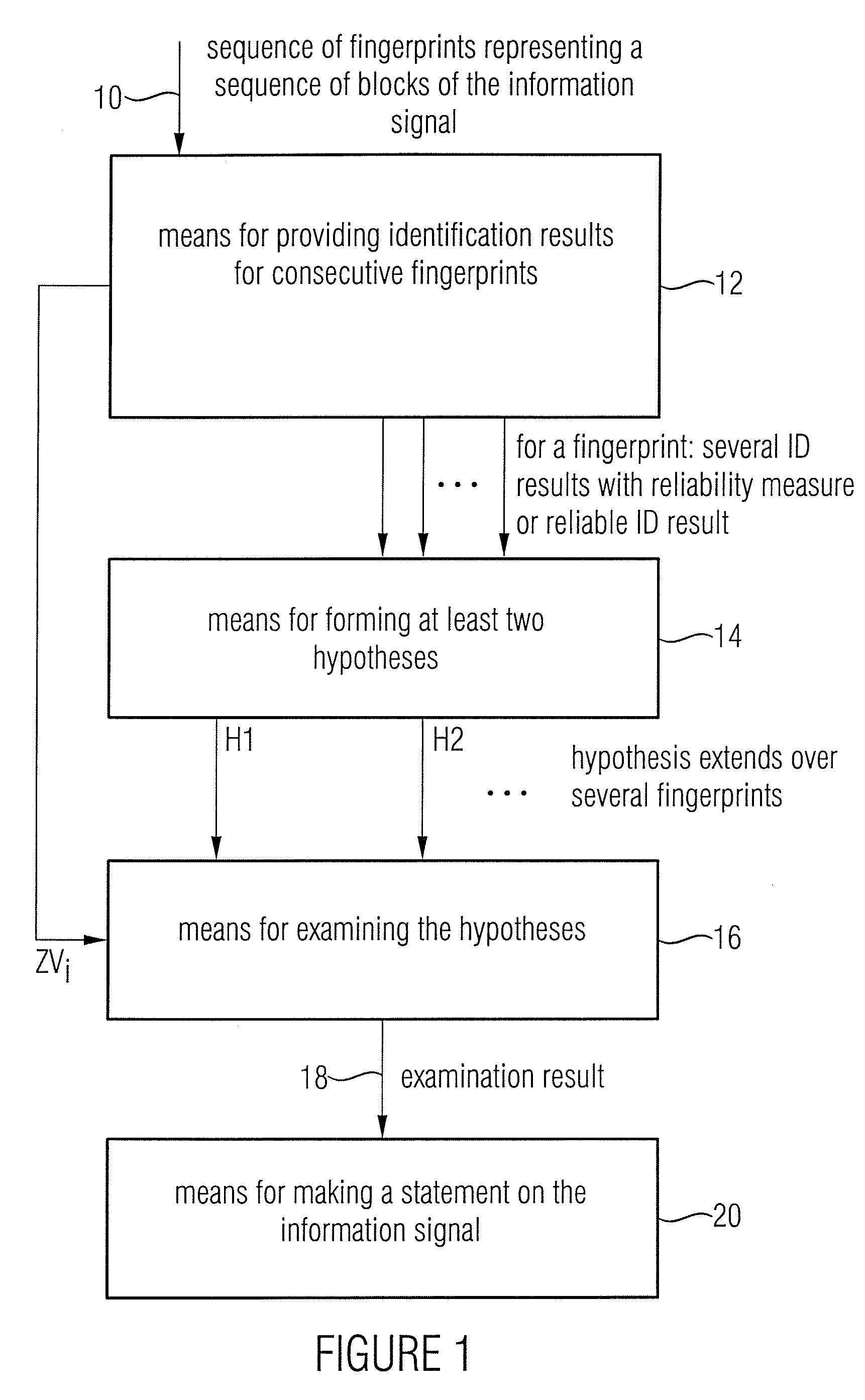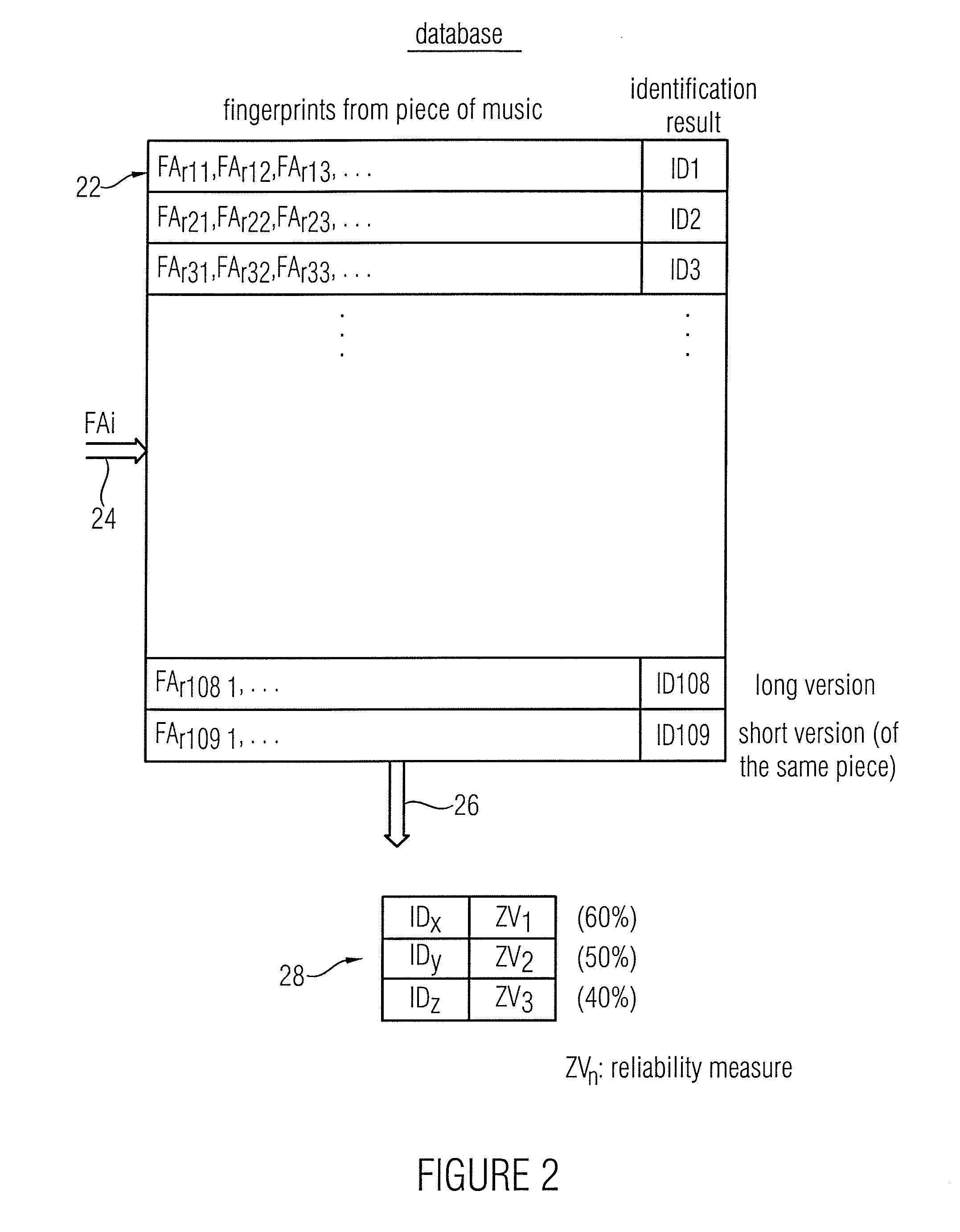Device and Method for Analyzing an Information Signal
- Summary
- Abstract
- Description
- Claims
- Application Information
AI Technical Summary
Benefits of technology
Problems solved by technology
Method used
Image
Examples
Embodiment Construction
[0043]FIG. 1 shows a block circuit diagram of a device for analyzing an information signal according to a preferred embodiment of the present invention. An exemplary information signal is indicated at 800 in FIG. 8. The information signal 800 consists of a sequence 802 of blocks of information units consecutive in time, wherein the individual information units 804 may be, for example, audio samples, video pixels or video transform coefficients, etc. A plurality of blocks of the sequence 802 together always form an information entity 806. In the embodiment shown in FIG. 8, the first six blocks form the first information entity, and the blocks 7, 8, 9, 10 form the second information entity. Starting from the blocks 11 to n, a third information entity is, for example, illustrated in FIG. 8. An information entity could, for example, be a piece of music, a spoken passage, a video image or, for example, also part of a video image. An information entity could, however, also be a text or, f...
PUM
 Login to View More
Login to View More Abstract
Description
Claims
Application Information
 Login to View More
Login to View More - R&D
- Intellectual Property
- Life Sciences
- Materials
- Tech Scout
- Unparalleled Data Quality
- Higher Quality Content
- 60% Fewer Hallucinations
Browse by: Latest US Patents, China's latest patents, Technical Efficacy Thesaurus, Application Domain, Technology Topic, Popular Technical Reports.
© 2025 PatSnap. All rights reserved.Legal|Privacy policy|Modern Slavery Act Transparency Statement|Sitemap|About US| Contact US: help@patsnap.com



